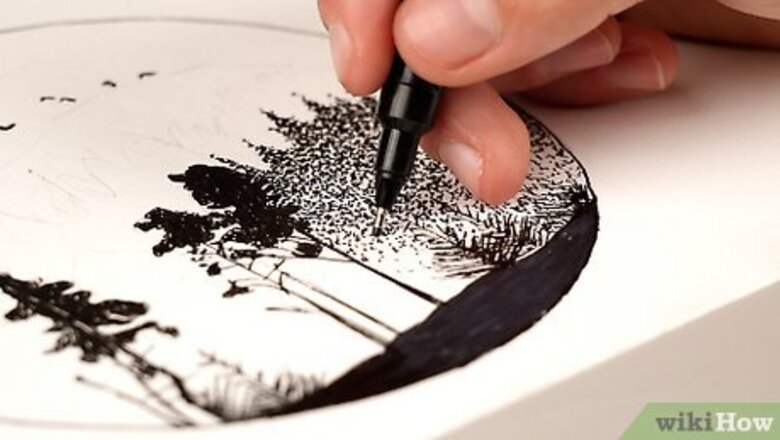
views
X
Research source
Similar to creating real-life 'pixels', stippling is an interesting form of drawing that's fun for anyone and everyone. If you're looking for a new challenge or just a creative way to spend a few hours, try stippling on for size.
Preparing Your Project
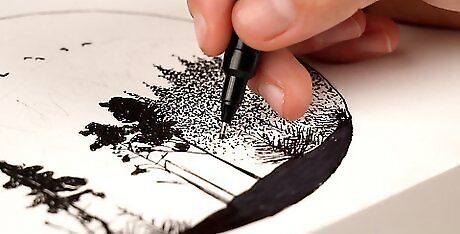
Decide how dense you will make your dots. Before you start making any dots, you need to decide how dense you will draw them. A more detailed image can be made with a higher density of dots. Keep in mind that an image with lots of dark values will need more stippling than an image with plenty of light. Try doing a set of dots on a piece of test paper, creating different shades of gray (or colors, if you’re using colored pencil) by spacing out the dots different amounts. You can then reference this test paper as you create your final project. The higher the density of dots, the more time it will take to recreate an image. If you don’t want to put a lot of time into the project but still need dark values, try using a pen with a larger nib (such as .1) or a different medium that creates larger spots.
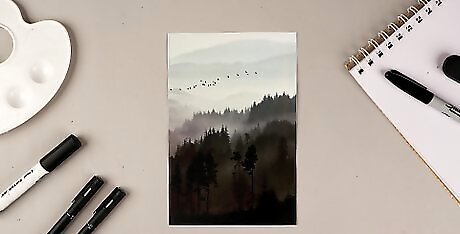
Evaluate the image you are recreating. Although you can certainly create a stippled drawing from an imagined image, it is much easier to do so with a hard copy to examine as you draw. Outside of determining where figures and objects are in the composition, you’ll need to look for a few other important elements. With your drawing laid out in front of you, look for: The light source and the direction of the light. The light will determine what areas need more stippling and what areas need less. The value of the drawing. This is where on the grayscale each of the colors (or shades) lie - how dark or light the colors are. Value is closely related to light. The shapes in the drawing. You’ll be creating all the figures and objects without using any lines, so pay attention to the shapes that compose the figures, and recreate them with your stippling.
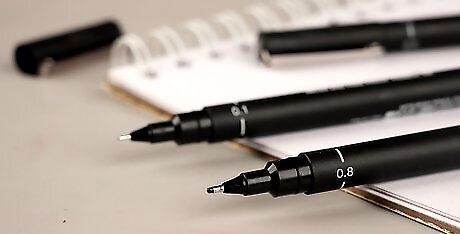
Decide on your medium. Because stippling is just the process of creating hundreds of tiny dots that make up an image, you can use many different media for creating the dots. Higher quality pointillism pieces are done with more dots per square inch, meaning that they were made with a drawing utensil that allowed for very small dots to be made. Keep this in mind, because although you can use about any medium you want to create your image, the smaller the mark that is made, the more realistic your image will look. Possible media for stippling include: A fine point pen. Most artists who do high-quality stippling use a pen with a .03 or .005 inch (0.0 cm) nib. This allows for tiny dots and plenty of shading. Pencils - colored or otherwise. Although by using pencil you run the risk of smearing the graphite and blending the color, you can use it to create small dots. Colored pencil is less likely to smear than graphite, and will add a bit more interest (and difficulty) to your image. Paint. Paint is typically considered the most difficult medium to stipple with, because it is much easier to accidentally create a stroke/line than it is with pen or pencil.
Stippling an Image
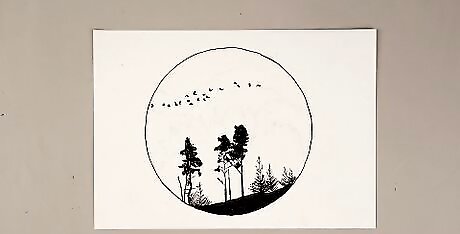
Choose a starting point. Looking at the original image, decide where you will begin your stippling on your drawing. Typically, it is easiest to choose the darkest point on your drawing. That is because you have more room for mistakes in the dark sections, because you can just add more dots to cover up anything you might do wrong.
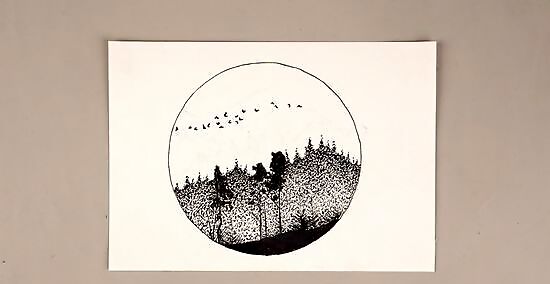
Begin stippling. Carefully lift and press your pen (or other utensil) onto your sheet of paper. The closer you place your dots, the darker the area on the paper will appear. Start with the darkest point, and then work around the image, filling in all the dark areas. Eventually, begin adding in the lighter areas by adding dots that are spaced further apart from each other. As you’re stippling, remember to: Keep all the dots evenly spaced. Although you can put some dots close together and others far apart, the finished work will look more attractive if the dots are evenly spaced. Avoid making dashes. Nothing will ruin your stippling project faster than adding dashes instead of dots. Be careful to always lift your pen (or other utensil) completely off the paper before setting it back down. Move slowly. Speed is not your friend when stippling. You’ll be much more likely to create a significant mistake if you’re working quickly, than if you are patient and take your time. Stippling is a very time-intensive practice, so be prepared to put many hours (or weeks!) into a single project.
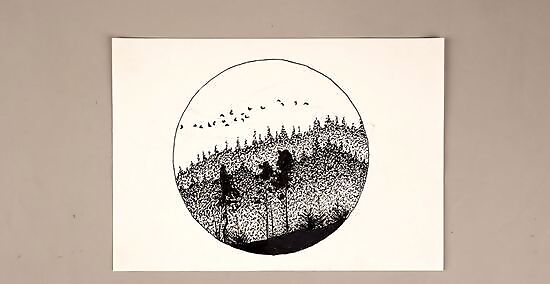
Add in detail. As the major shapes begin to appear, start adding small dots in patterns to form lines and shapes. From far away, these dots will appear to be lines. Close-up though, you’ll see them as they really are. You can also choose to begin stippling your image in a more dramatic pattern. For example, stipple all your dots in rows/columns or diagonal lines. These patterns will only be noticeable close-up and in the light (emptier) spaces. The shadows must be stippled a lot more to create darkness. The light areas should have minimal stippling with the highest lights, called the highlights left untouched working on white paper.
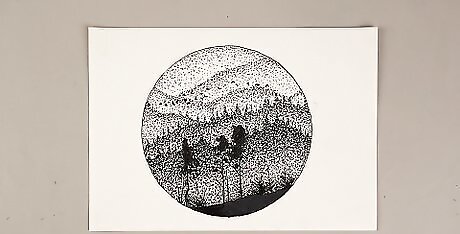
Finish your project. Stippling can take a very long time to complete, so don’t rush your work. When, however, you believe you are finished with your work, take a step back and look at it from afar. The true test of pointillism is its ability to create shapes and figures at a distance, not just when you’re standing close. If your stippling is dense, from far away the dots should look like shapes that were drawn, rather than just dots.










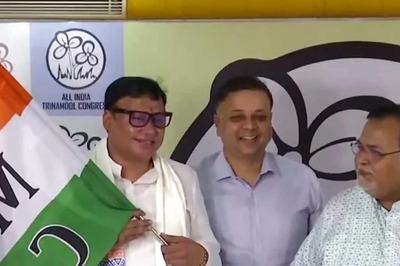



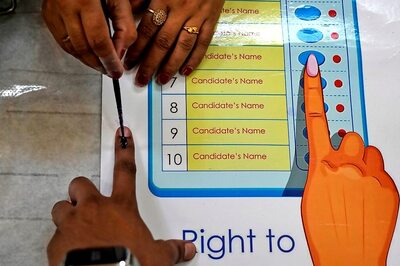





Comments
0 comment